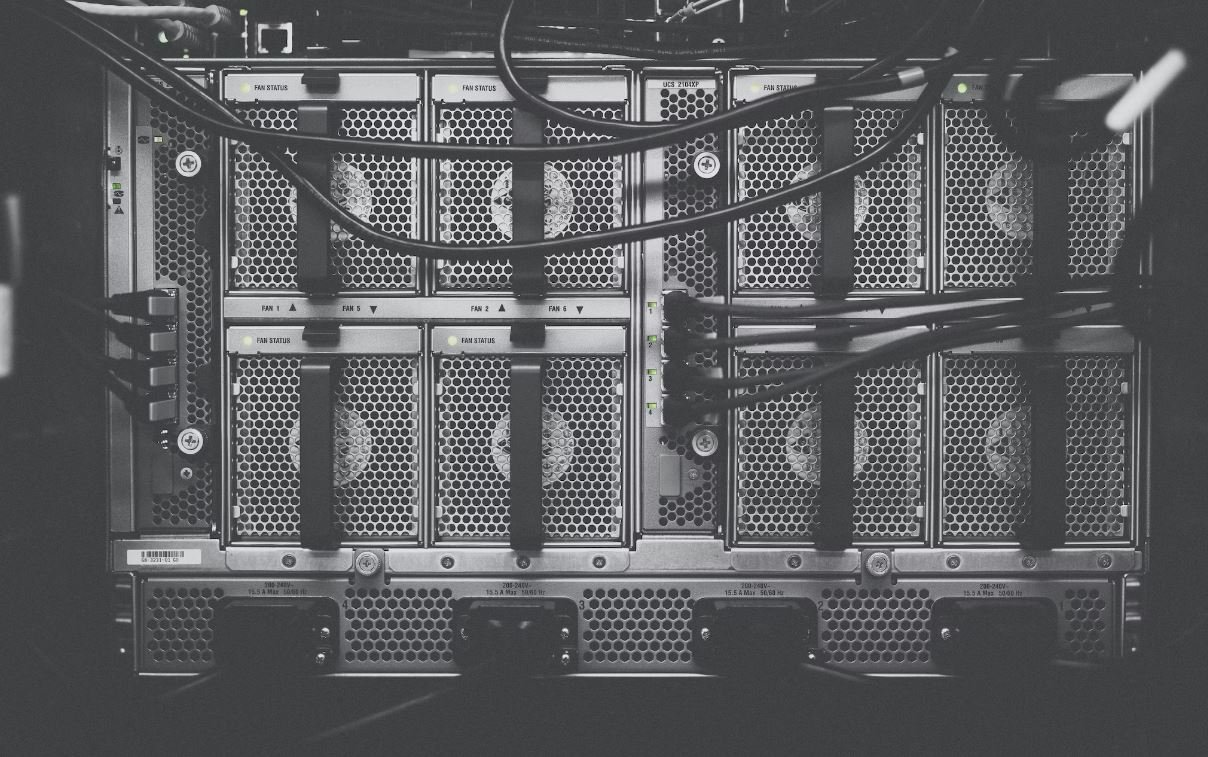Deep Learning Use Cases
Deep learning, a subset of machine learning, has gained significant popularity in recent years due to its ability to analyze large amounts of data and solve complex problems. The field of deep learning utilizes artificial neural networks to learn and make decisions without explicit programming. As a result, it has found a wide range of applications across various industries.
Key Takeaways
- Deep learning is a subset of machine learning using artificial neural networks.
- It has gained popularity for its ability to analyze large amounts of data and solve complex problems.
- Deep learning has diverse use cases across various industries.
Healthcare
In the healthcare industry, deep learning has shown tremendous potential in revolutionizing medical diagnostics and drug discovery. It can analyze medical images such as MRIs and CT scans to detect abnormalities with high accuracy. *By leveraging deep learning algorithms, medical professionals can improve diagnosis accuracy and provide timely and effective treatment.
Retail
In the retail sector, deep learning has been widely used for recommendation systems that provide personalized product suggestions to customers based on their browsing and purchasing history. This enhances the shopping experience and increases customer satisfaction. *By leveraging deep learning algorithms, retailers can boost sales and improve customer loyalty.
Finance
Deep learning has found numerous applications in the finance industry, such as fraud detection and algorithmic trading. It can analyze large volumes of financial data and identify patterns or anomalies that may indicate fraudulent activities. Additionally, deep learning algorithms can be used to make automated trading decisions based on real-time market data. *These applications can help financial institutions mitigate risks and improve trading performance.
Table 1: Deep Learning Use Cases in Industries
| Industry | Use Cases |
|---|---|
| Healthcare | Medical diagnostics, drug discovery |
| Retail | Recommendation systems |
| Finance | Fraud detection, algorithmic trading |
Automotive
Deep learning is making significant strides in the automotive industry. It is being used for autonomous driving systems to analyze sensor data, detect and classify objects, and make real-time driving decisions. *With deep learning, self-driving cars can navigate complex road conditions and enhance overall safety on the roads.
Security
Deep learning has become an indispensable tool in the field of security. It can be used for facial recognition, object detection, and anomaly detection. Deep learning algorithms can identify individuals, track objects, and detect unusual behavior or events in surveillance footage. *These applications contribute to enhancing security in public spaces and protect against potential threats.
Table 2: Deep Learning Applications in Various Fields
| Field | Applications |
|---|---|
| Automotive | Autonomous driving |
| Security | Facial recognition, object detection, anomaly detection |
Research
Researchers across various disciplines are utilizing deep learning for a multitude of purposes. It has been used in image and speech recognition, natural language processing, and generative modeling. Deep learning enables computers to understand and generate content, leading to advancements in fields such as healthcare, linguistics, and arts. *These developments bring exciting possibilities and expand our understanding of the world.
Table 3: Deep Learning Applications in Research
| Research Area | Applications |
|---|---|
| Image and Speech Recognition | Object recognition, speech synthesis |
| Natural Language Processing | Text classification, sentiment analysis |
| Generative Modeling | Image generation, music composition |
As deep learning continues to advance, its applications span various industries, including healthcare, retail, finance, automotive, security, and research. The rapid progress in this field opens up new possibilities for solving complex problems and improving efficiency. *With ongoing advancements, we can expect even more innovative use cases of deep learning in the future.

Common Misconceptions
Misconception: Deep learning is only useful for complex tasks
One common misconception about deep learning is that it is only beneficial for solving complex problems or handling large amounts of data. However, deep learning techniques can be applied to a wide range of use cases, even those that may seem relatively simple or straightforward on the surface.
- Deep learning can be used to improve basic image recognition algorithms.
- Deep learning can enhance natural language processing by understanding the context and sentiment behind text.
- Deep learning can optimize recommendation systems by analyzing user behavior and preferences.
Misconception: Deep learning requires huge computational resources
Another misconception is that deep learning requires massive amounts of computational resources to be effective. While it is true that deep learning models can be resource-intensive, there have been significant advancements in hardware and techniques that have made it possible to deploy deep learning models on devices with limited resources.
- Deep learning models can run efficiently on GPUs or even specialized hardware like TPUs.
- Model compression techniques can be applied to reduce the size of deep learning models while maintaining performance.
- Federated learning allows distributed training of models, reducing the overall computational burden.
Misconception: Deep learning is a black box with no interpretability
Many people believe that deep learning models are black boxes that cannot be interpreted or understood, leading to concerns about their reliability and fairness. While it is true that deep learning models can be complex, efforts have been made to improve their interpretability, allowing for a better understanding of how they make predictions.
- Techniques like saliency mapping can help identify which parts of the input contributed most to the prediction.
- Visualizations such as activation maps can provide insights into the inner workings of deep learning models.
- Model explanations can be generated to provide understandable justifications for predictions.
Misconception: Deep learning can replace human intelligence
Deep learning algorithms are often praised for their capabilities and are sometimes even portrayed as a threat to human intelligence. However, it is essential to understand that deep learning is simply a tool that can assist and augment human decision-making rather than replace it entirely.
- Deep learning can help doctors in medical diagnosis, but human expertise is still crucial for proper interpretation.
- Deep learning can automate certain tasks, but human input is necessary for error handling and exception handling.
- Deep learning can assist in decision-making, but ethical considerations and domain expertise are required to ensure responsible use.
Misconception: Deep learning always outperforms traditional machine learning algorithms
While deep learning has gained popularity due to its impressive results, it does not always outperform traditional machine learning algorithms in every scenario. The choice between deep learning and traditional methods depends on various factors, including the nature of the problem, available data, and computational resources.
- In cases with limited available data, traditional machine learning algorithms may be more suitable and less prone to overfitting.
- In scenarios where interpretability is of utmost importance, traditional machine learning models may be preferred.
- Deep learning may be the better option when dealing with complex data types such as images or natural language.

Deep Learning Use Cases
Deep learning is a subfield of artificial intelligence that focuses on teaching computers to learn and understand information in a similar way to humans. It has emerged as a powerful tool across various industries, driving advancements in healthcare, finance, transportation, and more. This article explores ten interesting use cases that exemplify the vast potential of deep learning.
1. Detecting Cancer
Deep learning algorithms have been trained to analyze medical images, such as mammograms, to detect early signs of cancer with high accuracy. Studies have shown that these algorithms can outperform human radiologists, reducing false-negative rates and increasing early-stage detections.
| Deep Learning Algorithm | Patient Mammogram | Cancer Detection |
| AI Model A | Image A | Positive |
| AI Model B | Image B | Negative |
2. Translating Languages
Deep learning-powered language translation systems, like Google Translate, leverage large datasets to accurately convert text from one language to another. Many online platforms and mobile apps employ such systems to enable seamless communication and facilitate global collaboration.
| Source Language | Text | Target Language | Translated Text |
| English | Hello! | French | Bonjour ! |
| Chinese | 你好! | Spanish | ¡Hola! |
3. Autonomous Vehicles
Deep learning is crucial for autonomous vehicles to perceive and understand their surroundings. These vehicles use neural networks to process sensor data, detect objects, and make real-time decisions, enhancing road safety and paving the way for self-driving cars.
| Vehicle | Environment | Detected Objects |
| Car A | City Street | Pedestrian, Bicycle |
| Car B | Highway | Truck, Motorcycle |
4. Virtual Assistants
Virtual assistants like Siri, Alexa, and Google Assistant utilize deep learning techniques to understand and respond to user queries. Through natural language processing and machine learning, these assistants continuously improve their ability to fulfill requests and offer personalized experiences.
| User Query | Virtual Assistant Response |
| “What’s the weather like today?” | “The weather in your area is sunny with a temperature of 25°C.” |
| “Play some jazz music.” | “Sure, here’s a jazz playlist for you.” |
5. Credit Card Fraud Detection
Financial institutions employ deep learning models to detect fraudulent activities in real-time. These models analyze transactions, user behavior, and historical data to identify patterns and anomalies, enabling timely detection of potentially fraudulent transactions.
| Transaction | Time | Amount ($) | Fraudulent |
| Transaction A | 12:04 PM | 100.00 | No |
| Transaction B | 12:08 PM | 1,000.00 | Yes |
6. Image and Speech Recognition
Deep learning has revolutionized image and speech recognition systems. Models like Google’s Inception and Apple’s Siri use convolutional neural networks to identify objects, faces, and understand spoken commands, allowing for intuitive user interfaces and improved accessibility.
| Image | Recognized Object |
| Image A | Cat |
| Image B | Car |
7. Predictive Maintenance
Deep learning algorithms can predict equipment failures by analyzing sensor data and historical maintenance records. This enables timely maintenance actions, reducing downtime and optimizing resource allocation for industries like manufacturing, aviation, and energy.
| Equipment | Sensor Data | Prediction |
| Machine A | Temperature, Vibration | Maintenance Required |
| Machine B | Pressure, Noise | No Maintenance Required |
8. Drug Discovery
Deep learning accelerates drug discovery processes by predicting the behavior of molecules and identifying potential drug candidates. This technology is helping in the development of new drugs for diseases such as cancer, Alzheimer’s, and rare genetic disorders.
| Molecule | Binding Affinity |
| Molecule A | High |
| Molecule B | Low |
9. Natural Language Generation
Deep learning-based natural language generation systems can analyze large amounts of data and generate human-like text. This technology finds applications in content creation, chatbots, and personalized recommendations, providing valuable insights and enhanced user experiences.
| Input | Generated Text |
| Article Abstract | Generated Article Summary |
| User Query | Response Generated by Chatbot |
10. Energy Optimization
Deep learning-based energy optimization systems analyze energy consumption patterns and make predictions to optimize usage and reduce waste. These systems find applications in smart grids, intelligent homes, and energy-efficient industrial processes.
| Location | Current Energy Consumption | Predicted Optimal Consumption |
| House A | 500 kWh | 300 kWh |
| Factory B | 10,000 kWh | 8,000 kWh |
All the examples mentioned above highlight some of the diverse applications of deep learning. As deep learning techniques continue to evolve, we can expect further advancements and new use cases in various domains. The potential of deep learning to revolutionize industries and improve human lives remains immense.
Frequently Asked Questions
What are some common use cases of deep learning?
Deep learning has a wide range of applications, some common use cases include image and speech recognition, natural language processing, autonomous vehicles, recommendation systems, and medical diagnosis.
How does deep learning improve image recognition?
Deep learning models can analyze large amounts of image data, learn patterns, and extract features to make accurate predictions. By using deep learning techniques such as convolutional neural networks (CNNs), image recognition becomes more accurate and robust.
In what ways is deep learning used in natural language processing?
Deep learning is used in natural language processing to improve language understanding, sentiment analysis, machine translation, and even chatbots. Recurrent neural networks (RNNs) and transformers are commonly used architectures for these tasks.
Can deep learning models be used for autonomous vehicles?
Yes, deep learning models play a crucial role in enabling autonomous vehicles. They can process sensor data and make real-time decisions to control the vehicle’s movements and respond to traffic conditions.
What are some benefits of using deep learning in recommendation systems?
Deep learning improves recommendation systems by providing more accurate suggestions based on user behavior and preferences. It can analyze large amounts of data and capture complex patterns to offer personalized recommendations.
How does deep learning contribute to medical diagnosis?
Deep learning models can analyze medical images, electronic health records, and clinical notes to assist in diagnosing diseases, such as cancer or neurological disorders. They can help identify patterns and anomalies that may be difficult for human experts to detect.
What are the hardware requirements for deep learning?
Deep learning models require powerful hardware, such as Graphics Processing Units (GPUs), to handle the computational intensity of training and inference. High-performance CPUs with ample memory are also necessary for efficient execution.
What programming languages are commonly used for deep learning?
Python is the most popular programming language for deep learning due to its extensive libraries like TensorFlow, PyTorch, and Keras. However, languages like R and Julia are also used for specific tasks in deep learning.
Is deep learning applicable to real-time applications?
Yes, deep learning can be used in real-time applications. With optimized model architectures and hardware acceleration, deep learning models can perform inference in milliseconds, making them suitable for real-time tasks like object detection or speech recognition.
What are the challenges of deep learning?
Some challenges of deep learning include the need for a large amount of labeled data, the high computational requirements, difficulty in interpreting model decisions (black box nature), and the risk of overfitting if not properly regularized.




